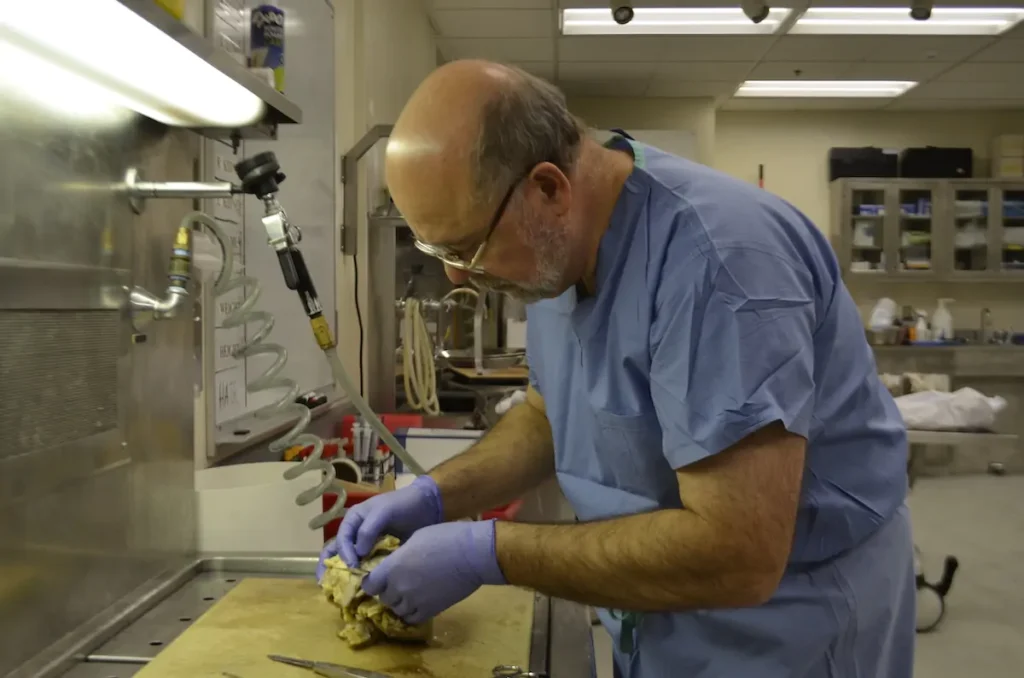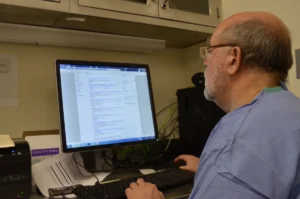Understanding Cause and Manner of Death for Legal Cases
In this brief overview, Dr. Andrew provides insights into interpreting forensic autopsy reports for attorneys, highlighting key terminology and common misconceptions to aid legal professionals in case preparation with this forensic autopsy guide. For attorneys, mastering the nuances of autopsy reports is vital for building strong cases and challenging expert testimony.
The primary objective of the death investigation and autopsy is to determine, as accurately as possible, the cause and manner of death. Cause of death is the disease, injury, or combination that initiates an ultimately lethal train of events, and without which death would not have occurred. This may be quite simple, e.g. “gunshot wound of head with perforations of skull and brain,” or complex, e.g. E. coli sepsis due to neurogenic bladder due to quadriplegia due to injury of cervical spinal cord. Death may be nearly immediate as in the former example or delayed by years as in the latter. The sequence of events determines how the death certificate should be worded.
The underlying or proximate cause of death must be etiologically specific. That is, it should withstand the “but for” test. If one can legitimately ask the question, “Due to what?” the proximate cause of death has not been properly certified. The immediate cause of death may or may not be the proximate cause. In the complex example above, E. coli sepsis is the immediate cause and the cervical spinal cord injury is the proximate cause.
Understanding Cause vs. Manner of Death
While there are countless potential causes of death, there are (in most jurisdictions), but five manners of death. “Manner” is simply a one-word description of how the death came about; typically natural, accident, suicide, homicide and undetermined. In medico-legal jurisdictions of just about any size, excluding sudden unexplained infant deaths, roughly 2-5% of autopsied deaths are certified as manner undetermined. Cause may be known, but manner undetermined. If cause is undetermined, manner is nearly always undetermined. (See previous posts on death certification on this site – “Death Certificates: The Good the Bad and the Ugly,” and “A Cause of Death vs. The Cause of Death.”)

Key Components of a Forensic Autopsy Report

- External Examination – This has three components. A description of the body as received, including all clothing, personal effects and items of potential evidentiary value. The body is undressed and a survey and description are made of all body surfaces, front and back, including any postmortem changes. A third component of the external examination is a detailed description of all external findings such as identifying marks, scars and any injuries or natural pathology.
- Internal Examination – The well-organized autopsy report from the medical examiner’s office will go through each organ system, describing the state and condition of each internal organ, including its weight (especially important for the heart, lungs and brain). Any abnormal internal fluid collections will be described in this section. If there are internal injuries, there is typically a separate section with specific wound paths described for penetrating injuries. Specimens for microscopical examination, toxicology and other laboratory studies are collected during this phase of the autopsy and may be listed separately at the end of the report.
- Microscopical Examination – Tissue samples examined under the microscope are described in this section. Trauma deaths may or may not have specimens examined by this method.
- Diagnostic Studies – This section catalogues all ancillary studies used to interpret the anatomical findings, including X-rays or other imaging studies, toxicology, microbiological studies, genetic studies, etc.
- Summary and Opinion – The entire autopsy report should be an objective description of the findings revealed at autopsy. The summary and opinion section, typically relatively brief, collates the findings into an opinion as to the cause of death as specifically as possible. It is based on the observed facts and should be free of speculation.
Case-Specific Considerations for Attorneys
Always request the entire case file, including associated photographic images. Your case will have specific forensic and/or medical issues. The autopsy should be read with these in mind and will be the focus of your expert’s analysis of the case. Examples include time of death (See previous post on Time of Death), range of fire, entrance versus exit wounds and sequence of shots in gunshot wound cases, wound/weapon characteristics in cutting and stabbing cases (See previous post on interpretation of cutting and stabbing injuries) and mechanisms and patterns of injuries in blunt impact injury cases (See previous post on Blunt Impact Injuries). Case specific issues will also arise in deaths due to strangulation, drug-related deaths, infant and child deaths, not to mention the occasional death certified as “homicidal violence of undetermined type” or other such verbiage. Wading into the interpretive weeds of an autopsy report of an alleged homicide will be a bit less daunting with the aid of an experienced forensic pathologist.
Summary
An autopsy report is a detailed and objective account of findings that can be invaluable in legal cases. However, effectively interpreting this information requires expertise and attention to detail. By working with an experienced forensic pathologist, attorneys can approach these reports with confidence, ensuring every critical detail is considered. Whether it’s understanding cause and manner of death, analyzing injuries, or addressing case-specific issues, the right expertise transforms complex medical findings into actionable legal insights.
Navigating the complexities of forensic autopsy reports requires a keen understanding of both the medical and legal implications. For tailored insights and expert analysis for your particular case, contact us. Dr Thomas Andrew can provide the clarity and guidance necessary to address case-specific questions and strengthen your legal strategy.

